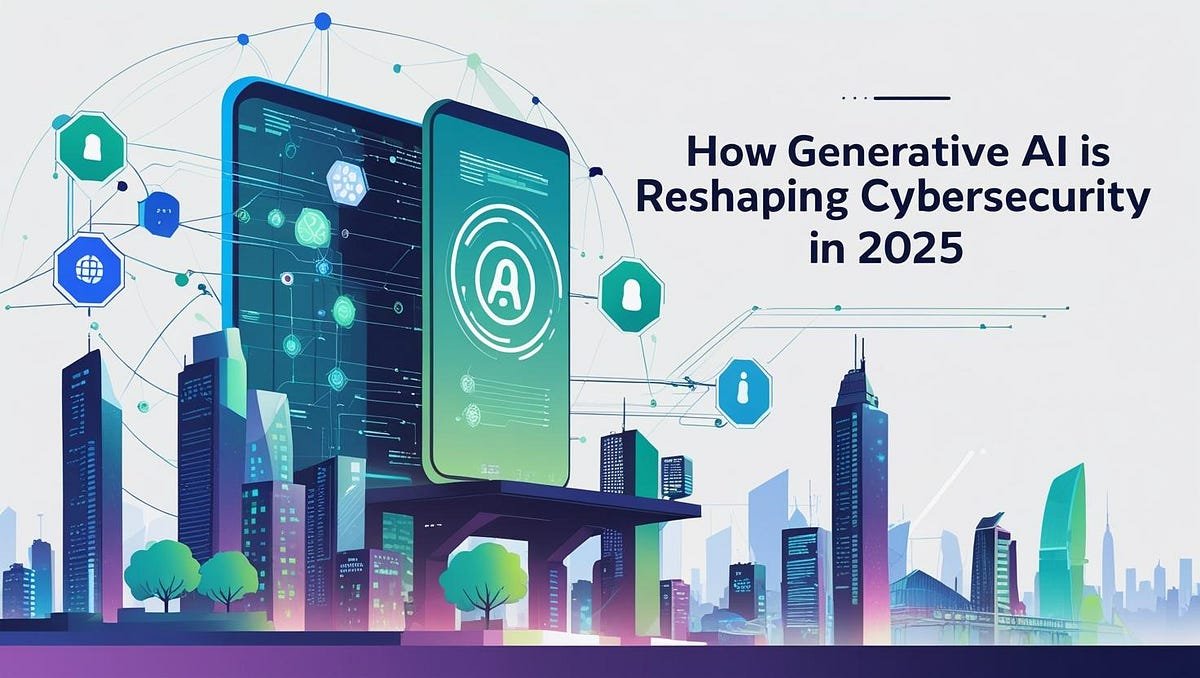
Powered by Pinaki IT Hub – Building the Next Generation of Cybersecurity & AI Leaders
The worlds of cybersecurity and Generative AI (GenAI) are no longer separate disciplines. They’ve merged into a powerful partnership that protects data, predicts threats, and even creates intelligent systems that learn to defend themselves.
From personal devices to enterprise infrastructure, cybersecurity powered by GenAI is revolutionizing how we work, live, and do business.
In this blog, we’ll explore:
● What cybersecurity means in the era of GenAI
● How GenAI is used in daily life and business applications
● Real-world examples from leading companies
● The market growth and impact of AI-driven security
● Career opportunities in this fast-growing field
● How Pinaki IT Hub is preparing professionals for the future of AI-powered cybersecurity.
What Is Cybersecurity in the GenAI Era?
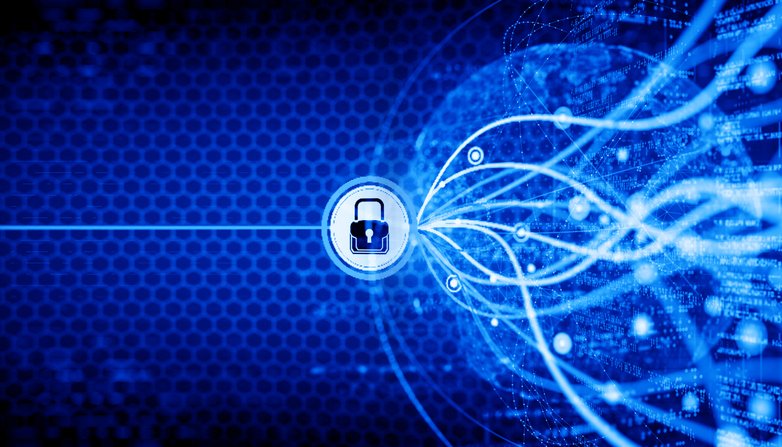
Introduction: The Evolution of Digital Defense
Cybersecurity has long been the backbone of the digital world, protecting organizations and individuals from malicious actors. In its earlier stages, it focused mainly on tools like firewalls, antivirus software, and manual threat detection. These methods were effective when attacks were simpler and more predictable.
Today, the digital landscape has changed dramatically. Threats have become far more complex, as cybercriminals use automated and AI-powered techniques to launch large-scale, sophisticated attacks. Traditional security tools, which rely heavily on predefined rules and signatures, are no longer enough to counter such fast-moving, constantly evolving threats.
This shift has given rise to a new era of cybersecurity powered by Generative AI (GenAI). Unlike traditional tools, GenAI leverages machine learning, natural language processing, and advanced pattern recognition to not just detect and respond to attacks but to predict and prevent them.
Modern cybersecurity is no longer a static shield. It has evolved into an intelligent, adaptive defense system—capable of anticipating risks, neutralizing threats before they escalate, and continuously improving as it learns from new data.
Redefining Cybersecurity with GenAI
In the past, cybersecurity relied on databases of known malware and threat signatures. Security systems only acted when they recognized patterns that matched previously seen attacks. This approach often left organizations vulnerable to new, unknown, or evolving threats.
GenAI changes this approach entirely. By continuously learning from massive amounts of real-time data, it can:
● Identify unusual patterns or behaviors that deviate from the norm.
● Simulate potential attack scenarios to uncover weaknesses in a system.
● Generate and deploy defensive measures on its own, often faster than human intervention.
This has transformed cybersecurity from being:
Reactive – responding after an attack occurs, to being
● Proactive – predicting and preventing attacks before they cause harm.
In today’s world, cybersecurity powered by GenAI is:
● Predictive, using intelligent algorithms to foresee potential attack vectors.
● Adaptive, modifying defense strategies as attackers change tactics.
● Automated, responding to threats in real time without human delay.
AI-Driven Threat Detection
One of the most important ways GenAI has transformed cybersecurity is through real-time threat detection. Organizations today manage vast amounts of data—coming from cloud
services, IoT devices, digital platforms, and millions of user interactions. Manually reviewing such data for signs of a breach is simply impossible.
GenAI acts as an intelligent observer, scanning billions of data points at incredible speed to identify unusual activity. It learns what normal behavior looks like—such as typical login times, device usage patterns, and network activity—and raises alerts when it detects anything abnormal.
For example, if a company employee who usually logs in during office hours suddenly attempts to access sensitive data at midnight from a new device in another country, GenAI can flag the activity as suspicious or even block it in real time.
In addition to detecting current threats, GenAI uses predictive analytics to identify warning signs that often precede attacks. This allows organizations to strengthen defenses before the attack even happens.
Automated Incident Response
Traditional cybersecurity processes often required human teams to investigate alerts, analyze the threat, and then take action. This approach could take hours or even days, giving attackers time to cause serious damage.
In today’s GenAI-driven environment, incident response is fast and often fully automated. As soon as a threat is detected, the system can:
● Instantly block malicious IP addresses or suspicious domains.
● Quarantine compromised files or devices to stop the spread of malware.
● Deploy patches automatically to fix newly discovered vulnerabilities.
● Trigger self-healing mechanisms, restoring affected systems to their secure state.
This automation significantly reduces the time between detection and action—often from hours to seconds—minimizing potential damage, reducing downtime, and preventing breaches from escalating.
Zero-Trust Architecture
In the past, once a user or device gained access to a network, it was often assumed to be trustworthy. This created vulnerabilities because attackers who got inside—through stolen credentials or compromised accounts—could move freely within the system.
Modern cybersecurity, particularly in the GenAI era, follows a Zero-Trust approach. This means no user, device, or application is trusted by default—not even those already inside the network.
GenAI enhances this approach by applying continuous verification and context-aware authentication. It evaluates factors like device type, location, time of login, and behavior patterns before granting access. If anything seems off—for example, an employee tries to access data unrelated to their role—access is denied or flagged for further review.
Additionally, micro-segmentation of networks ensures that even if an attacker breaches one area, they cannot easily move across the system. GenAI plays a key role in detecting and stopping such lateral movements within the network.
Data Privacy and Compliance
Protecting sensitive data is not only essential for security but also a legal requirement in many industries. Regulations like GDPR, HIPAA, and CCPA impose strict rules on how organizations collect, store, and share personal information.
Manual compliance processes, such as periodic audits and reporting, are often time-consuming and prone to oversight. GenAI revolutionizes this by providing automated compliance monitoring and reporting. It continuously tracks how data is handled, flags potential violations in real time, and helps organizations maintain compliance effortlessly.
For example, if unauthorized personnel try to access restricted customer records or if data is transferred to a location that violates privacy regulations, GenAI can immediately detect and alert administrators. It can also assist in creating accurate and up-to-date compliance documentation, saving time and reducing risk.
From Reactive to Predictive Security
Perhaps the most significant change that GenAI brings to cybersecurity is the shift from a reactive to a predictive and proactive approach. Traditional methods often responded only after a breach occurred, leaving organizations exposed during the critical early stages of an attack.
Today, GenAI-enabled systems learn from live data and past incidents to anticipate potential vulnerabilities and attack patterns. This allows defenders to take preventive measures—such as updating policies, reinforcing security gaps, or blocking suspicious activities—long before an actual breach happens.
This evolution is essential in an age where attackers themselves use AI tools to find weaknesses faster than human analysts can respond. By matching and exceeding the speed and intelligence of these attackers, GenAI helps maintain an advantage.
The Road Ahead for Cybersecurity
As businesses continue to expand into the cloud, adopt hybrid work models, and integrate millions of IoT devices, the complexity of managing security will only increase.
The future of cybersecurity will continue to build on GenAI, focusing on:
● Self-learning systems that continuously improve through exposure to real-world threats.
● Integration with blockchain technologies for stronger identity verification and data integrity.
● Development of quantum-resistant encryption to safeguard data against future quantum computing attacks.
● Enhanced security training programs powered by GenAI, which simulate phishing and social engineering attacks to prepare employees more effectively.
By embedding GenAI at every layer of digital defense—networks, devices, applications, and cloud platforms—organizations can create a resilient and adaptive security ecosystem that evolves in step with emerging threats
Conclusion: Cybersecurity as a Living Ecosystem
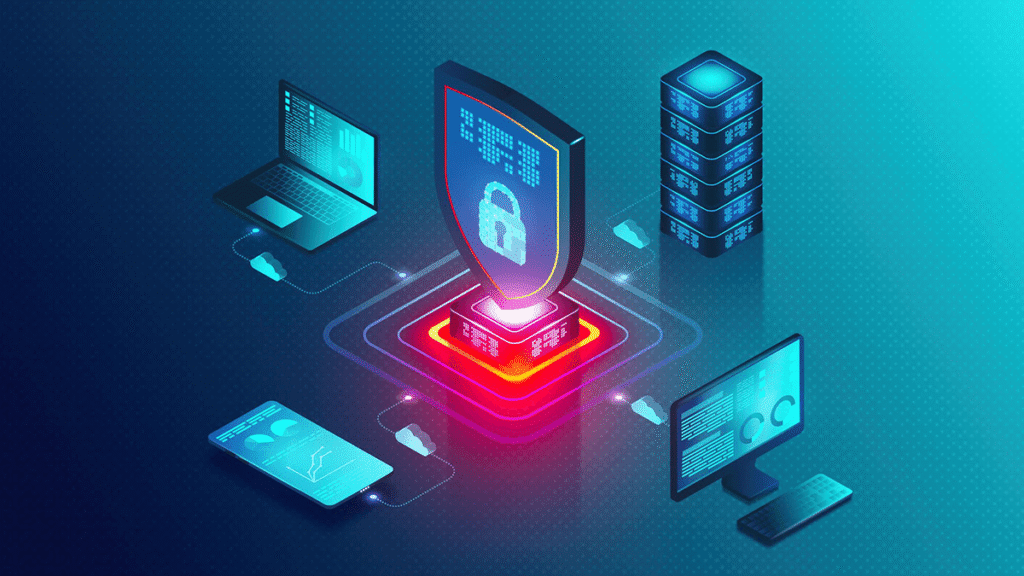
Today’s cybersecurity is no longer limited to static firewalls or signature-based detection. It has become a dynamic, living system that learns, adapts, and acts faster than human teams ever could.
GenAI has emerged as the foundation of this new era. With capabilities such as real-time threat detection, automated incident response, zero-trust architecture, and continuous compliance monitoring, it enables organizations to reduce risk, protect sensitive data, and build trust with customers and partners.
In this modern age, GenAI is not just an enhancement to existing cybersecurity tools—it is the core of future-ready digital defense strategies. For businesses, governments, and individuals alike, adopting GenAI-powered cybersecurity is no longer optional; it is essential to safeguard the digital world of today and tomorrow.
Cybersecurity Meets Daily Life: Where GenAI Shows Up
Introduction: A Silent Guardian in Our Connected World
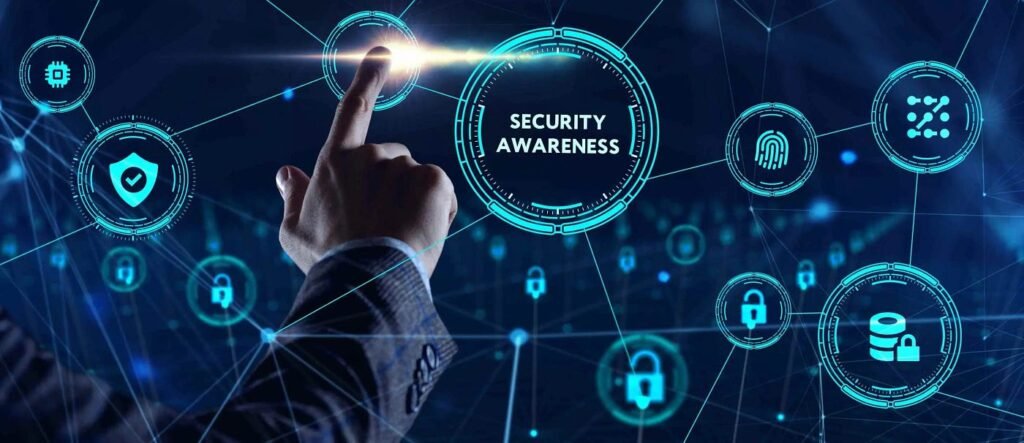
In today’s hyperconnected world, cybersecurity isn’t just a concern for large corporations or government agencies. It has become a part of our daily lives, quietly protecting us as we shop online, send messages, work remotely, and even monitor our health.
The rise of Generative AI (GenAI) has transformed cybersecurity from a specialized field into a pervasive, invisible shield that surrounds our digital lives. Unlike traditional security tools that rely on fixed rules and manual detection, GenAI uses its ability to learn, adapt, and predict to secure the devices and platforms we use every day.
Whether you’re managing your finances on a mobile app, unlocking your smart front door, or joining a video call from your living room, GenAI is there—working silently in the background to keep your data and identity safe.
This seamless integration of GenAI-powered security means that cyber defense is no
longer just about enterprise servers or corporate networks. It now extends to homes, wallets, wearable devices, communication tools, and remote workspaces, touching nearly every aspect of modern life.
Smart Homes: The Front Line of Personal Cybersecurity
Today’s homes are more connected than ever. Smart locks, voice assistants, security cameras, thermostats, and even kitchen appliances are linked to the internet. This convenience, however, creates new opportunities for cybercriminals.
A single weak link—like a poorly secured smart camera—can give attackers access to other devices on the same home network. This is where GenAI steps in as a vigilant protector.
How GenAI Secures Smart Homes
● Behavior Monitoring: GenAI learns typical household patterns—who logs into devices, at what times, and from which locations. When it detects something unusual—like a login attempt from a different country or at an odd hour—it can automatically lock out the suspicious user and alert the homeowner.
● Threat Anticipation: Instead of waiting for known attacks, GenAI anticipates them by analyzing activity across millions of connected devices. It can spot unusual patterns in data traffic that might indicate an incoming attack—such as a coordinated attempt to access smart locks.
● Real-Time Response: If it detects an ongoing breach, GenAI can isolate the affected device from the rest of the network, preventing further compromise.
Everyday Impact
Imagine being on vacation while your smart doorbell receives a login attempt from a device in another country. Instead of leaving you vulnerable, the AI-driven system immediately blocks access, sends you an alert on your phone, and continues to monitor for further suspicious activity.
In this way, GenAI doesn’t just secure devices; it safeguards peace of mind for families who rely on smart technology.
Personal Finance: Protecting Every Digital Transaction
The financial sector has always been a prime target for cybercrime. With the surge in mobile banking, contactless payments, and digital wallets, securing financial transactions has become more complex than ever.
Today, GenAI serves as a real-time watchdog for personal finance, helping detect and prevent fraud before it drains accounts or damages credit.
Where GenAI Works in Finance
● Fraud Detection: Banking apps like Paytm, Revolut, and Monzo use AI algorithms to scan millions of transactions every second. By identifying suspicious activities—such as transfers to unknown accounts, unusual spending patterns, or multiple failed login attempts—AI can immediately block the transaction and request verification from the user.
● Behavioral Analysis: GenAI learns each customer’s typical spending and saving habits. If it notices deviations—like large withdrawals from unfamiliar locations or repeated high-value purchases on a new device—it raises a red flag instantly.
● Phishing Prevention: By analyzing messages, URLs, and login portals, GenAI can recognize fake banking websites or fraudulent payment links and warn users before they fall victim.
Why It Matters
In the past, fraud detection often happened hours or days after the transaction, allowing attackers to siphon off funds. Now, real-time AI monitoring has reduced the window of vulnerability to seconds. This proactive approach has saved millions of people from financial losses and helped banks minimize liability.
Email and Messaging: The First Line of Digital Defense
Email and messaging apps remain the most common entry points for cyberattacks, especially through phishing attempts. A single click on a malicious link can expose personal information or compromise entire networks.
Thankfully, GenAI has become a silent filter that shields our inboxes and chats from such threats.
How GenAI Protects Communications
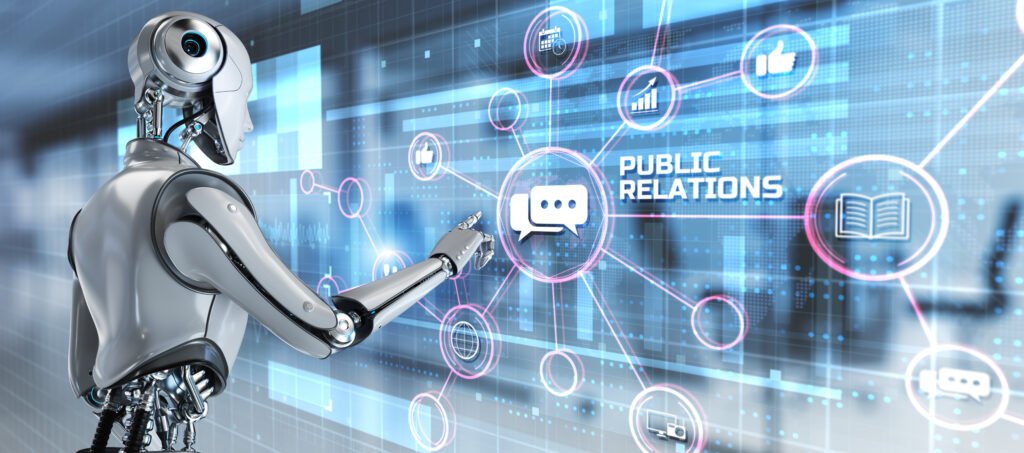
● Phishing Detection: Platforms like Gmail and Outlook use AI to scan emails for suspicious links, hidden scripts, or fake sender identities.
● Language Analysis: By understanding patterns in the tone, grammar, and structure of messages, GenAI can often spot scams designed to trick users into sharing sensitive details.
● Real-Time Warnings: When users try to click on potentially harmful links, the system intervenes, issuing immediate alerts or blocking access.
The User Experience
You may not notice it, but each time an email lands in your spam folder or a suspicious link is blocked in a messaging app, GenAI has quietly intercepted a potential threat. This background defense has become one of the most vital shields against cybercrime in our daily communications.
Healthcare Apps: Safeguarding Our Most Sensitive Data
Healthcare is one of the most data-sensitive sectors today. With the growth of telehealth services, wearable devices, and health tracking apps, people now share personal medical details online more than ever before.
This makes healthcare systems an attractive target for cybercriminals who seek to exploit or sell private health information. GenAI-powered cybersecurity plays a critical role in protecting these digital health ecosystems.
Key Functions in Healthcare Security
● Data Encryption and Monitoring: GenAI ensures that sensitive data, such as medical history or diagnostic results, is encrypted and remains inaccessible to unauthorized users.
● Anomaly Detection: It monitors for unusual patterns—like attempts to access patient records from unrecognized devices or locations—and flags them instantly.
● Breach Prevention in Wearables: Devices like smartwatches and fitness trackers often collect real-time health data. GenAI ensures these devices remain secure against breaches or unauthorized data extraction.
Practical Example
Imagine a wearable heart monitor sending data to a cloud-based healthcare platform. If GenAI detects that the data is being accessed by an unknown third-party server, it can cut off the connection and alert both the user and healthcare provider immediately.
Work-From-Home Networks: Securing the Modern Workplace
The rise of remote and hybrid work models has extended corporate networks into millions of homes. Employees often connect to work systems using personal devices and home Wi-Fi networks, which may not be as secure as enterprise networks.
GenAI has become an essential tool in securing this new distributed workplace.
How GenAI Protects Remote Work
● Home Network Security: AI tools can detect and block malware attempting to infiltrate through poorly protected Wi-Fi routers.
● Endpoint Protection: Laptops and mobile devices used for work are continuously monitored for unusual behavior or malicious software.
● Data Protection in the Cloud: With employees sharing and storing data across various cloud services, GenAI ensures that sensitive files are encrypted, accessed only by authorized personnel, and free from hidden threats.
A Real-World Impact
Consider a scenario where a phishing email reaches an employee working from home. GenAI not only blocks the malicious link but can also isolate the employee’s device if it shows signs of infection, preventing the threat from spreading to the company’s wider network.
The Silent Guardian of Everyday Life
One of the most striking features of GenAI-powered cybersecurity is its invisible, behind-the-scenes nature. Most people don’t realize how often AI intervenes to protect them because it works seamlessly—without disrupting daily routines.
From filtering spam emails and securing banking transactions to blocking unauthorized smart home logins and safeguarding personal health data, GenAI is like a vigilant guardian, present in almost every aspect of our connected lives.
A Future of Smarter, Safer Digital Living
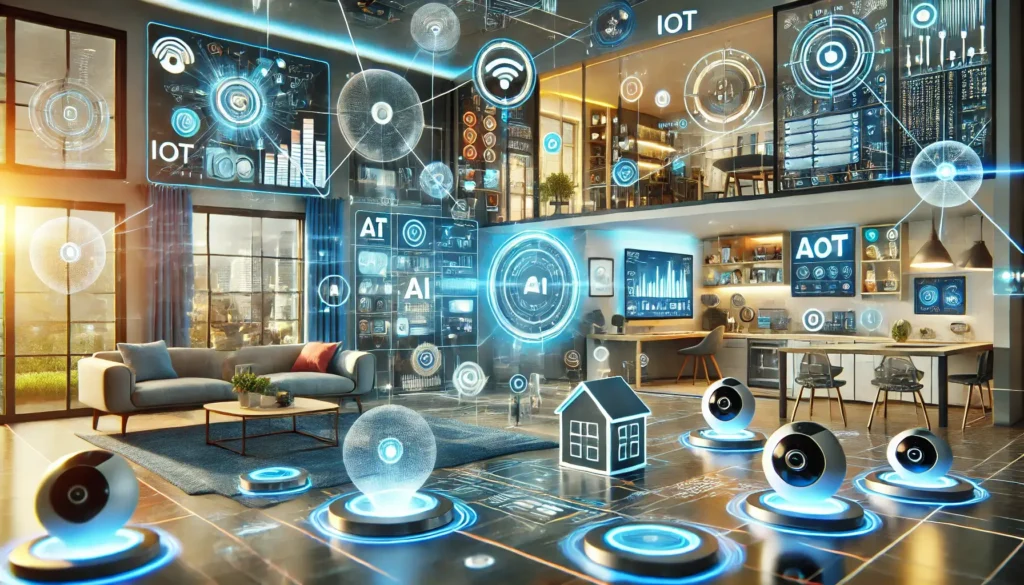
As the world becomes even more dependent on interconnected devices—ranging from self-driving cars to AI-powered personal assistants—the role of GenAI in cybersecurity will continue to grow.
Future developments may include:
● More sophisticated behavioral analysis, capable of detecting new attack strategies before they emerge.
● Stronger integration with IoT ecosystems, ensuring even the simplest devices in our homes are secure.
● Improved user education through AI-driven simulations, helping people recognize and avoid cyber threats.
The promise of GenAI is that security will become smarter, faster, and more proactive, keeping pace with an ever-evolving threat landscape.
Conclusion: Cybersecurity in the Current Era
Cybersecurity is no longer an abstract concern reserved for IT professionals or large enterprises. In the current era, it’s a daily companion—embedded in the apps we use, the networks we connect to, and the devices we rely on.
GenAI has emerged as the backbone of modern digital defense, enabling real-time threat detection, automated responses, and adaptive learning that protects both individuals and organizations.
By acting as a silent yet tireless guardian, GenAI ensures that our digital experiences—whether at home, at work, or in transit—remain secure, private, and trustworthy. As technology continues to evolve, GenAI’s role in keeping our daily lives safe will only become more essential.
Business Scenarios: How Companies Use GenAI for Cybersecurity
Introduction: From Reactive Defense to Proactive Security
In today’s digitally driven world, cyberattacks are no longer rare events—they are a constant reality. Organizations face threats from ransomware, phishing schemes, identity fraud,
insider leaks, and highly sophisticated state-sponsored attacks. Traditional security methods—firewalls, signature-based antivirus software, and human-led incident response—are no longer enough to keep pace with attackers who evolve their strategies every day.
Enter Generative AI (GenAI)—a transformative force in cybersecurity. By combining machine learning, natural language processing, and pattern recognition, GenAI empowers businesses to move from a reactive posture to a proactive, predictive defense strategy.
Across industries—banking, healthcare, logistics, cloud services, and more—companies are using GenAI not just to respond to threats but to anticipate and neutralize them before they strike. The most notable players in this space—Microsoft, IBM, CrowdStrike, Darktrace, and Google Cloud Security—are leading this shift.
Microsoft: Rapid Threat Analysis and Response
Microsoft has long been a dominant player in enterprise cybersecurity. With the introduction of Microsoft Security Copilot, powered by GenAI, the company has revolutionized how businesses detect and respond to cyber threats.
How Security Copilot Transforms Security Operations
● Accelerated Threat Analysis: Security Copilot processes enormous volumes of threat intelligence—everything from global attack patterns to localized incidents—at incredible speed.
● Incident Response Automation: It can suggest immediate remediation steps or execute actions automatically, such as isolating compromised devices or blocking malicious IPs.
● Analyst Empowerment: Instead of wading through endless logs, human analysts now receive prioritized insights and actionable recommendations, allowing them to focus on critical decision-making.
Impact
● Organizations using Security Copilot have reported over 40% faster response times to cyberattacks.
● By reducing manual workloads, it frees cybersecurity teams to focus on long-term strategy rather than being stuck in “firefighting mode.”
Example: A multinational retailer experienced a large-scale phishing campaign targeting its employee accounts. With Security Copilot, the company was able to detect the breach within minutes,
identify the compromised endpoints, and block further infiltration—reducing potential damage significantly.
IBM: Real-Time Threat Hunting and Compliance at Scale
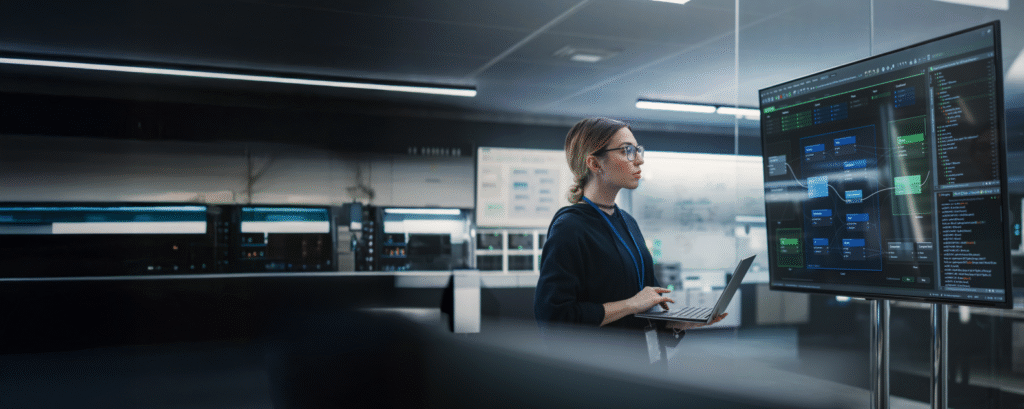
IBM QRadar Suite, integrated with GenAI capabilities, is one of the most trusted platforms for organizations in highly regulated industries such as finance and healthcare.
What QRadar Suite Offers
● Advanced Threat Hunting: By using GenAI to sift through massive security logs, it identifies subtle anomalies that might indicate insider threats or advanced persistent attacks.
● Compliance Automation: For industries dealing with regulations like GDPR, HIPAA, and PCI DSS, QRadar automates compliance reporting and alerts organizations when policies are breached.
● Contextual Insights: The AI doesn’t just flag suspicious activity; it explains the context—how it relates to known attack patterns or vulnerabilities—empowering analysts to act quickly.
Impact
● Banks use QRadar to detect and mitigate ransomware attacks in real time, preventing service disruptions.
● Healthcare providers rely on it to monitor the security of cloud-hosted patient data, ensuring compliance while keeping sensitive information safe.
Example: A global healthcare network faced a surge in ransomware attempts during peak telehealth usage. QRadar’s GenAI detected unusual lateral movements within the network and immediately contained the attack, preventing a major breach.
CrowdStrike: Predicting Tomorrow’s Threats Today
When it comes to preemptive defense, CrowdStrike’s Falcon Platform is a game-changer. Unlike traditional systems that respond only after an attack is detected, Falcon uses GenAI to predict and neutralize threats before they emerge.
Core Capabilities
● Predictive Analysis: Falcon constantly studies new malware variants and attack behaviors across millions of endpoints worldwide, enabling it to anticipate patterns that haven’t yet been exploited.
● Automated Response: When it detects a threat, Falcon can autonomously quarantine devices, block malicious code execution, and alert IT teams in real time.
● Cloud-Native Flexibility: Because it’s cloud-based, Falcon delivers updates instantly across global networks without the need for manual patches.
Impact
● Major enterprises such as DHL leverage Falcon to secure vast and complex global supply chains, minimizing disruptions caused by cyber incidents.
● By predicting threats instead of waiting for them, Falcon reduces the risk window significantly.
Example: A logistics company detected a new type of ransomware attack in its European operations. Before the attack could spread to its warehouses and distribution hubs worldwide, Falcon identified the malware signature and blocked it at the source—saving the company millions in potential losses.
Darktrace: Self-Learning AI for Unseen Threats
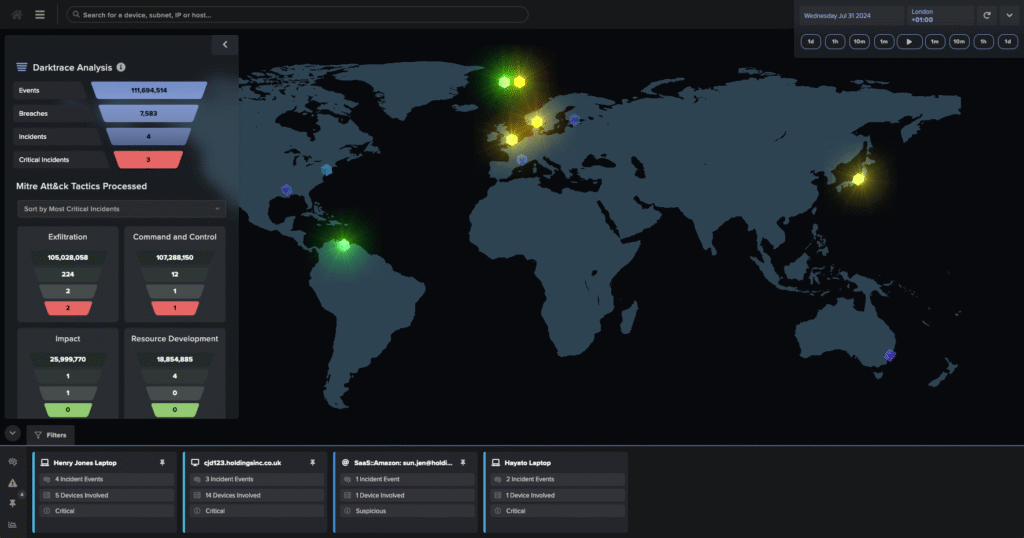
While many cybersecurity solutions rely on pre-defined rules or known threat signatures, Darktrace takes a unique approach by deploying self-learning AI. This makes it particularly effective at identifying threats that have never been seen before.
Key Features
● Behavior-Based Detection: Darktrace doesn’t rely on lists of known threats. Instead, it learns the normal behavior of every user, device, and system within a network.
● Anomaly Detection: If it notices unusual activity—like large data transfers at odd hours or logins from unexpected locations—it flags the anomaly in real time.
● Autonomous Response: Darktrace can automatically slow down or contain suspicious activities without requiring manual input.
Impact
● Organizations use Darktrace to catch insider threats and zero-day attacks that bypass traditional security layers.
● Its quick response time has made it a trusted partner for companies managing sensitive intellectual property.
Example: A media production company faced an insider threat where an employee attempted to exfiltrate sensitive project files. Darktrace’s AI immediately detected the anomaly, halted the transfer, and alerted the security team before any data could leave the network.
Google Cloud Security AI: Safeguarding Billions
At the scale of the internet, Google’s Cloud Security AI is a cornerstone of digital defense, protecting both individuals and businesses worldwide.
Core Strengths
● Cloud-Native Security: Google integrates AI-driven defense into all its services, including Gmail, Google Workspace, and enterprise cloud platforms.
● Mass-Scale Protection: Billions of Gmail users benefit from AI that filters out phishing emails, malware-laden attachments, and suspicious login attempts.
● Identity Fraud Prevention: By continuously analyzing login patterns, device locations, and behavior histories, Google’s AI flags unauthorized access attempts instantly.
Impact
● Google’s security solutions help enterprise clients maintain trust by preventing breaches that could compromise sensitive customer data.
● For individuals, these protections often go unnoticed—because they happen in the background, ensuring a seamless and safe online experience.
Example: A global e-commerce platform using Google Cloud experienced a sophisticated credential-stuffing attack. Google’s AI detected the anomaly at scale and blocked billions of unauthorized login attempts within minutes.
Beyond Defense: Building Trust Through Intelligence
These industry leaders demonstrate that cybersecurity in today’s world is no longer just about erecting barriers against attackers. It’s about:
● Intelligence: Gaining deeper visibility into potential risks.
● Proactive Defense: Anticipating and neutralizing threats before they strike.
● Resilience: Ensuring that even when an attack occurs, response is immediate and disruption is minimal.
● Customer Trust: Demonstrating to clients and users that their data and privacy are protected.
By embedding GenAI into their operations, companies are not merely reacting to cyber threats—they are outsmarting attackers and setting a new standard for what secure digital business looks like.
The Ripple Effect Across Industries
While the examples above focus on leading security providers, the impact of GenAI-driven cybersecurity extends to nearly every industry:
● Retailers protect customer payment information during peak shopping seasons.
● Financial institutions block fraudulent transactions in real time.
● Healthcare providers secure patient data while meeting compliance requirements.
● Manufacturers and logistics companies protect their global supply chains from disruptions caused by ransomware or insider threats.
This widespread adoption shows that GenAI has moved cybersecurity from being a specialized IT concern to a business-critical function that drives trust and resilience across entire industries.
Conclusion: GenAI as the New Standard for Business Security
Cybersecurity in the current era demands speed, intelligence, and adaptability—qualities that human teams alone cannot deliver at scale. By integrating Generative AI, leading companies like Microsoft, IBM, CrowdStrike, Darktrace, and Google Cloud Security are redefining how organizations protect their assets, employees, and customers.
The shift is profound: cybersecurity is no longer just a shield—it has become a strategic advantage. Businesses that adopt GenAI-based security are not only defending themselves more effectively but also building trust, ensuring compliance, and safeguarding their long-term success in a digital-first world.
As cyber threats continue to grow in complexity, the question is no longer whether companies will use GenAI for cybersecurity—but how quickly they can integrate it to stay ahead of evolving risks.
Market Growth & Global Impact of GenAI in Cybersecurity
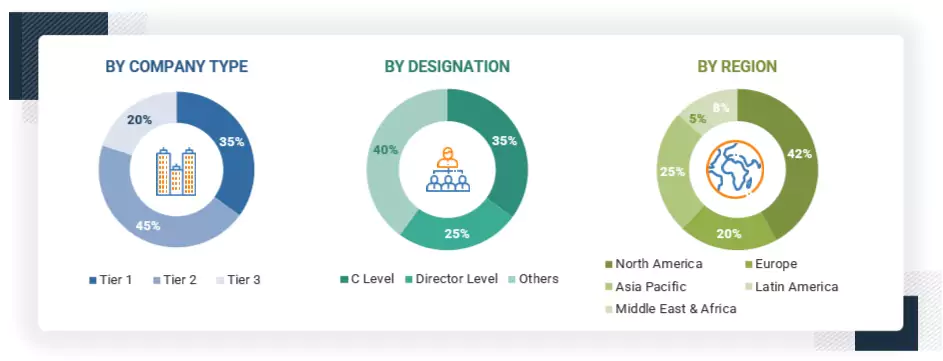
Introduction: From Niche Technology to Global Necessity
Cybersecurity has always been a cornerstone of the digital economy, but in today’s era of hyperconnectivity and increasing cybercrime, it has evolved into a business-critical function. The explosion of connected devices, cloud platforms, and digital transactions has opened new attack surfaces that traditional security systems can’t manage fast enough.
This is where Generative AI (GenAI) has emerged as a transformative force. No longer limited to research labs or specialized startups, GenAI is now powering the world’s most advanced cybersecurity solutions—detecting threats in real time, automating responses, and predicting risks before they can materialize.
The result is more than just stronger security. The rise of AI-powered cybersecurity is reshaping global markets, business strategies, and the very fabric of the digital economy.
The Soaring Demand for AI-Driven Security
The cybersecurity market, once defined by reactive tools like antivirus software and static firewalls, has shifted toward proactive, adaptive, and AI-driven defense systems. This shift is accelerating due to several powerful forces:
● Relentless Cyber Threats: The frequency and sophistication of ransomware, phishing campaigns, and data breaches have skyrocketed in recent years.
● Data Privacy Regulations: Laws like the General Data Protection Regulation (GDPR) in Europe, HIPAA in healthcare, and PCI-DSS in finance are holding businesses accountable for data protection.
● Digital Transformation: The mass adoption of cloud computing, IoT devices, and hybrid work models has increased vulnerabilities and created urgent demand for
automated security.
Market Momentum
Industry analysts report that the global cybersecurity market is on track to reach approximately $450 billion by 2030, with the largest share of that growth fueled by AI-powered solutions.
What’s more, over 70% of enterprises worldwide are already integrating GenAI into their security frameworks to:
● Automate threat detection.
● Reduce response times from hours to minutes.
● Strengthen compliance with evolving regulatory standards.
This growth is not just about buying new software. It reflects a fundamental shift in how businesses view cybersecurity—not as a technical afterthought but as a strategic enabler of trust, innovation, and continuity.
Key Drivers Behind the Surge
Several factors have combined to propel the rapid growth of GenAI in cybersecurity markets worldwide:
- Escalating Cyber Threat Landscape
Cyberattacks have evolved from simple malware infections to complex, multi-stage intrusions often backed by organized crime and even state actors. Traditional rule-based systems can’t keep up with such adaptive threats.
GenAI, however, excels at:
● Detecting new attack signatures by recognizing subtle behavioral anomalies.
● Predicting patterns of sophisticated attacks before they reach critical infrastructure.
● Enabling organizations to take preemptive measures rather than react after damage occurs.
Stricter Data Privacy Regulations
Global regulations have made cybersecurity a legal requirement, not just a best practice. Failure to comply with standards like GDPR or HIPAA can lead to massive fines, legal disputes, and reputational damage.
GenAI helps businesses:
● Continuously monitor compliance.
● Generate automated audit reports.
● Identify vulnerabilities in real time to ensure regulatory obligations are met.
- Expanding Digital Ecosystems
The adoption of cloud computing, IoT devices, and hybrid work models has created an interconnected digital environment with countless endpoints—each of which is a potential vulnerability.
GenAI-based cybersecurity scales effectively across these environments, providing:
● Real-time visibility into every connected device.
● Automated containment of suspicious activity.
● Uniform protection across on-premises, cloud, and hybrid infrastructures.
Sectors Leading the Transformation
While GenAI-driven cybersecurity is becoming essential across all industries, certain sectors are at the forefront due to the sensitive nature of the data they handle and the high cost of breaches.
- Finance
Banks, payment gateways, and fintech platforms rely heavily on GenAI to:
● Detect and prevent fraudulent transactions in real time.
● Safeguard customer accounts against identity theft.
● Ensure compliance with financial regulations.
This proactive approach not only protects customers’ money but also strengthens trust in digital financial services.
Healthcare
Healthcare organizations face the dual challenge of protecting patient privacy and securing critical medical infrastructure. GenAI-powered solutions are invaluable in:
● Encrypting and safeguarding sensitive patient records.
● Monitoring telehealth platforms for suspicious access attempts.
● Blocking ransomware that targets hospital systems and connected medical devices.
Healthcare providers adopting GenAI are not only avoiding breaches but also improving operational efficiency and patient trust.
3.E-Commerce and Retail
Online marketplaces and retailers process millions of transactions daily, making them prime targets for cybercriminals. GenAI solutions help by:
● Monitoring payment systems for fraudulent activity.
● Protecting customer data during peak sales seasons.
● Securing loyalty programs and rewards systems against exploitation.
By delivering secure and seamless transactions, retailers enhance customer confidence and brand loyalty.
4.Cloud Computing and SaaS
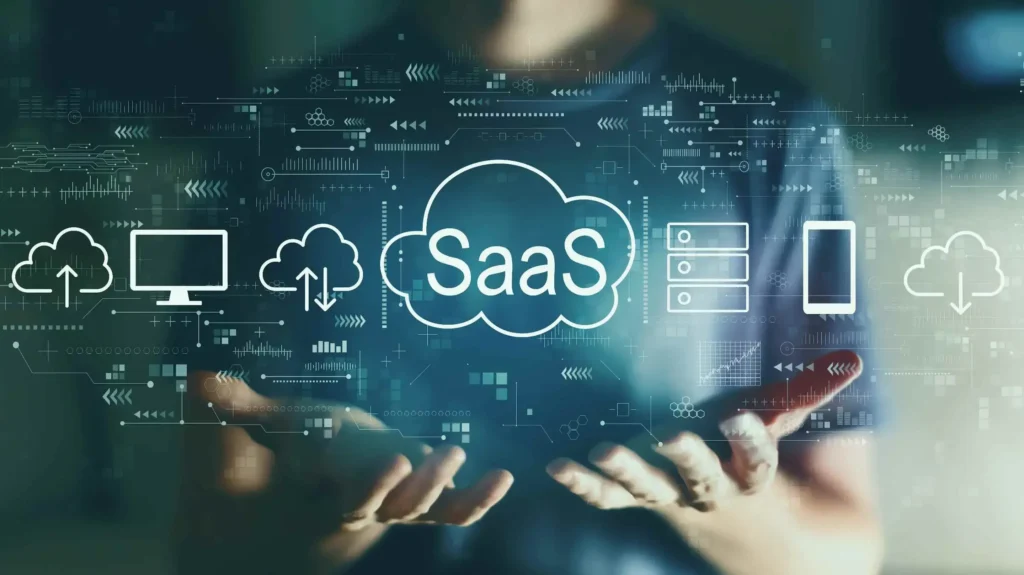
Cloud service providers and SaaS companies operate vast, shared digital environments that must remain secure around the clock. GenAI-driven cybersecurity enables these businesses to:
● Identify unusual activity across distributed networks.
● Quarantine compromised accounts automatically.
● Prevent large-scale breaches that could affect millions of users.
Cloud platforms that invest in GenAI security are now marketing it as a competitive differentiator, showcasing their commitment to safeguarding customer data.
Key Benefits for Businesses
The adoption of GenAI in cybersecurity offers a combination of technical and business advantages that extend far beyond traditional protection.
- Faster Threat Detection
Traditional security tools often take days or even weeks to detect breaches—time during which attackers can cause extensive harm. GenAI reduces this detection time from weeks to minutes or even seconds by analyzing massive amounts of data in real time.
Impact: Rapid detection helps minimize both financial losses and reputational damage. - Lower Operational Costs
Automated AI systems handle tasks that previously required large, specialized security teams, including:
● Analyzing network traffic logs.
● Detecting anomalies.
● Generating reports.
Impact: This automation significantly lowers operational expenses while allowing human experts to focus on higher-level strategic initiatives.
3.Improved Customer Trust
In today’s market, data security is directly tied to brand reputation. Companies that consistently demonstrate strong protection of customer data:
● Attract new customers.
● Retain existing ones.
● Differentiate themselves from competitors who fail to prioritize cybersecurity.
Impact: Trust becomes not just a byproduct of security but a driver of business growth.
4.Regulatory Compliance
Compliance with data protection regulations is often one of the most resource-intensive aspects of cybersecurity. GenAI streamlines this by:
● Continuously scanning for policy violations.
● Providing real-time alerts.
● Automatically generating the documentation required for audits.
Impact: Businesses reduce the risk of costly fines while maintaining customer confidence in their data-handling practices.
Global Impact: A Shift in Business Strategy
The worldwide adoption of GenAI-driven cybersecurity is not just an IT trend—it is reshaping how businesses operate and compete in the digital economy.
- Cybersecurity as a Business Enabler
Far from being a cost center, modern cybersecurity has become a strategic enabler. Companies are now leveraging their strong security posture as a selling point to attract clients, partners, and investors. - Democratization of Advanced Security
What was once accessible only to large corporations is now within reach of small and medium-sized businesses. Cloud-based GenAI solutions have made enterprise-grade cybersecurity affordable and scalable, leveling the playing field for organizations of all sizes. - Strengthening Global Digital Trust
As more businesses adopt robust, AI-driven security measures, customers, investors, and governments alike gain confidence in the safety of the global digital ecosystem. This trust fosters innovation, fuels cross-border e-commerce, and accelerates the growth of the digital economy as a whole.
Conclusion: A Strategic Imperative for the Current Era
In today’s hyperconnected economy, cybersecurity powered by GenAI is no longer optional—it’s an essential pillar of business continuity, growth, and global trust.
From reducing detection time and lowering operational costs to boosting customer confidence and ensuring compliance, GenAI delivers tangible benefits that transform cybersecurity from a technical requirement into a strategic advantage.
The market’s rapid expansion and the widespread integration of GenAI in security frameworks underscore one key reality: Organizations that prioritize AI-powered cybersecurity today will lead tomorrow’s digital economy—secure, resilient, and trusted by customers worldwide.
Career Opportunities in Cybersecurity & GenAI
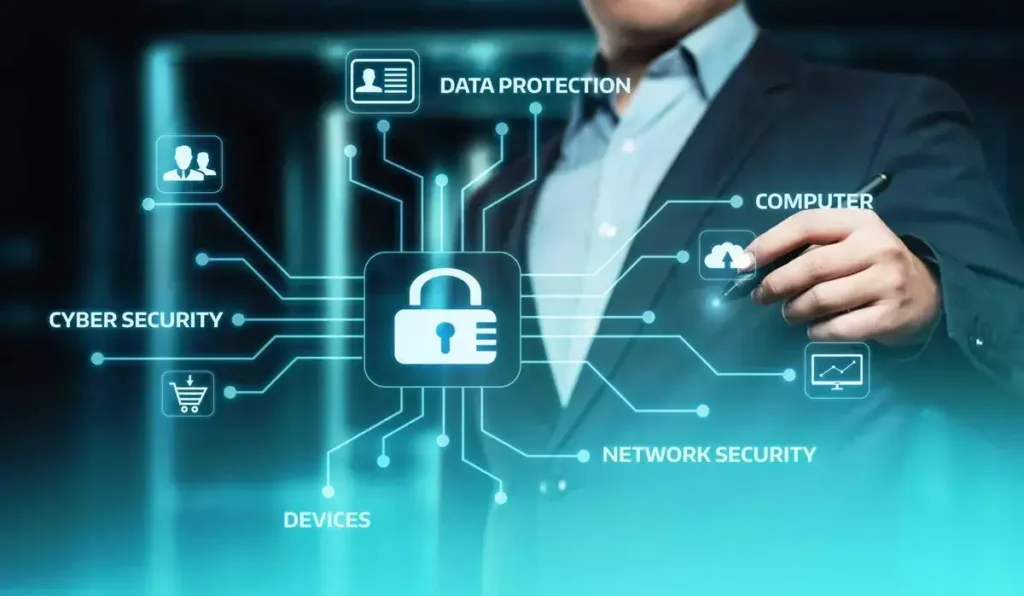
The Future of Work Is Already Here
Cybersecurity has transformed from a niche technical function into one of the most crucial pillars of today’s digital economy. With cyber-attacks becoming more sophisticated and frequent, and with Generative AI (GenAI) redefining how threats are detected and neutralized, there has never been a more exciting—and critical—time to build a career in this field.
Today, businesses across every industry—from global banks to small startups—are racing to strengthen their cyber defenses. This surge in demand has created a wave of new-age career opportunities at the intersection of AI and cybersecurity. Professionals who can blend technical expertise with AI-driven thinking are among the most sought-after specialists in the world.
This chapter dives deep into the diverse, rewarding, and impactful career paths you can pursue in the current era of AI-powered cybersecurity.
Why Cybersecurity & GenAI Careers Matter Today
We live in a hyper-connected world where personal devices, business networks, and even national infrastructures rely on the internet. While this connectivity drives innovation, it also creates an ever-expanding playground for cybercriminals.
Traditional defenses like firewalls and antivirus software are no longer enough. Attackers use AI to develop advanced malware and launch phishing campaigns at massive scales. To stay ahead, organizations now need AI-driven defenders—people who can leverage GenAI to predict, detect, and eliminate threats in real time.
For professionals, this means high demand, job security, and opportunities to make a real difference. The rise of GenAI isn’t just changing how security teams work; it’s creating brand-new roles that didn’t exist a decade ago.
Top In-Demand Roles in Cybersecurity & GenAI
Below are the most exciting and future-proof roles available in the field today. Each role plays a unique part in defending digital ecosystems and offers exceptional opportunities for growth.
- AI-Powered Security Analyst
The AI-Powered Security Analyst is the front-line hero of modern cybersecurity. These specialists use advanced AI platforms to monitor networks, analyze suspicious activity, and respond to threats at lightning speed.
What They Do:
● Leverage AI tools to scan billions of data points for anomalies.
● Respond to alerts generated by automated threat-detection systems.
● Collaborate with incident-response teams to contain and remediate breaches.
Key Skills:
● Python or similar scripting languages for custom threat analysis.
● Experience with SIEM (Security Information and Event Management) tools.
● Understanding of machine learning models and how they detect anomalies.
● Incident response and digital forensics.
Impact: AI-powered analysts reduce detection time from weeks to minutes, saving companies millions in potential damages.
2.Cloud Security Engineer
As more businesses move their operations to the cloud, the need for skilled cloud security professionals has skyrocketed. Cloud Security Engineers focus on securing sensitive data and preventing breaches in platforms like AWS, Azure, and Google Cloud.
What They Do:
● Implement AI-driven monitoring systems that detect unusual access or data flows.
● Configure encryption, identity, and access-management policies.
● Ensure compliance with data-protection regulations across regions.
Key Skills:
● Deep understanding of cloud architectures and services.
● Proficiency in encryption methods and secure key management.
● Knowledge of zero-trust frameworks and automated compliance reporting.
Impact: Cloud Security Engineers help businesses scale securely while maintaining customer trust.
Cyber Threat Intelligence Specialist
Think of this role as the detective of the digital world. These professionals analyze global attack patterns, monitor the dark web, and use GenAI to anticipate emerging threats.
What They Do:
● Collect and interpret data from diverse sources—logs, threat feeds, and dark-web forums.
● Use GenAI models to predict attackers’ next moves and identify new malware families.
● Share actionable intelligence with defense teams to strengthen security posture.
Key Skills:
● Ethical hacking and red-team/blue-team operations.
● Data analytics and visualization for large-scale threat data.
● Threat modeling and risk assessment frameworks.
Impact: They help organizations stay one step ahead, making cybersecurity proactive rather than reactive.
Penetration Tester (AI-Enhanced)
Also known as “ethical hackers,” Penetration Testers simulate cyberattacks to expose weaknesses in systems before real criminals exploit them.
Today’s pen testers use AI-powered tools to automate vulnerability scans, simulate sophisticated attack vectors, and test defenses against evolving threats.
What They Do:
● Design and execute simulated cyberattacks on applications, networks, and IoT devices.
● Use AI to identify hidden vulnerabilities faster than manual methods.
● Provide detailed reports with remediation strategies to security teams.
Key Skills:
● Knowledge of popular hacking tools and vulnerability assessment platforms.
● Scripting in Python, Bash, or PowerShell to customize attacks.
● Understanding of advanced malware and AI-driven exploit techniques.
Impact: Pen testers help organizations identify and fix security gaps before attackers exploit them.
5.Security Product Developer
Security Product Developers build the very tools and platforms that protect businesses against modern threats. By combining AI algorithms with cybersecurity frameworks, they create solutions like automated incident-response platforms, fraud-detection engines, and self-learning firewalls.
What They Do:
● Design and develop GenAI-driven cybersecurity solutions.
● Collaborate with data scientists to train and optimize AI models.
● Ensure their products integrate seamlessly with enterprise security ecosystems.
Key Skills:
● Software development (Python, Java, or C++).
● Knowledge of AI frameworks such as TensorFlow or PyTorch.
● Understanding of enterprise security needs and regulatory requirements.
Impact: These professionals are shaping the future of cybersecurity by creating tools that protect millions of users worldwide.
Salary Insights: Rewarding Careers Across the Globe
The rising demand for cybersecurity and GenAI skills translates into attractive pay packages and excellent growth opportunities.
● India: Mid-level professionals in AI-driven cybersecurity roles earn between ₹10 – ₹25 lakh per annum, while experienced specialists and leaders can earn ₹40 lakh or more annually.
● Global: In mature markets like the US, Europe, and Singapore, senior experts earn between $120,000 – $200,000 per year, with top-tier professionals exceeding even these figures.
These salaries reflect not just the technical skills required but also the high value companies place on protecting their digital infrastructure.
Industries Leading the Hiring Wave

AI-powered cybersecurity is now a top priority across sectors. The following industries are investing heavily in talent:
- Banking & Finance: Fraud detection, secure transactions, and regulatory compliance are mission-critical for financial institutions.
- Healthcare: Protecting sensitive patient data and ensuring privacy in telehealth and wearable technologies.
- E-Commerce: Securing digital payments, protecting customer data, and maintaining trust in online marketplaces.
- Government & Defense: Safeguarding national infrastructure, critical networks, and citizen data against cyber-espionage.
- Cloud Service Providers: Companies like AWS, Azure, and Google Cloud need specialized professionals to protect their global platforms.
Why This Field Is Future-Proof
Cyber threats aren’t going away; they’re evolving. As attackers adopt AI-based strategies, businesses will continue to seek skilled professionals who can counter them with intelligence and innovation.
For individuals, this field offers:
● Relevance: Skills that are in demand across industries and regions.
● Growth: Opportunities to advance into leadership roles like Chief Information Security Officer (CISO) or AI Security Architect.
● Impact: The chance to directly safeguard critical information, business continuity, and even national security.
A career in Cybersecurity & GenAI today is not just about writing code or analyzing logs—it’s about shaping the safety of the digital future. The roles outlined above represent more than just jobs; they’re gateways to meaningful work that blends technology, creativity, and problem-solving.
As the world becomes more interconnected, the demand for professionals who can protect it will only grow. Whether you’re a fresh graduate exploring options or a seasoned IT professional looking to upskill, this field offers limitless opportunities to thrive.
In essence: Cybersecurity in the GenAI era is where passion meets purpose—delivering innovation while safeguarding the very fabric of our digital lives.
Why Choose Pinaki IT Hub to Build a Career in AI-Driven Cybersecurity
Building the Next Generation of Cyber Defenders
In today’s hyper-connected world, cybersecurity is not just a technical field—it’s a mission to protect people, businesses, and nations from invisible yet devastating digital threats.
With the rise of Generative AI (GenAI), cyber-attacks have grown more sophisticated, and so have the defenses.
For aspiring professionals, this means one thing: the future belongs to those who can blend the power of AI with the principles of cybersecurity. And that’s exactly where Pinaki IT Hub stands out.
At Pinaki IT Hub, we don’t just teach theory. We prepare learners to become front-line defenders of the digital world—equipped with cutting-edge skills, real-world experience, and industry-recognized certifications.
If you’re looking to launch or accelerate your career in AI-driven cybersecurity, here’s why Pinaki IT Hub is your ideal launchpad.
1.Hands-On Training with Real-World Tools
Learning cybersecurity isn’t about memorizing concepts—it’s about doing. That’s why Pinaki IT Hub emphasizes practical, immersive training that mirrors the challenges faced by professionals in the field today.
Work with Industry-Standard Platforms
Our learners get hands-on experience with the same platforms used by top global enterprises:
● IBM QRadar: for advanced threat detection and incident response.
● CrowdStrike Falcon: for AI-powered endpoint security and malware prevention.
● Splunk: for log analysis and security information management.
● AI Frameworks like TensorFlow and PyTorch: to understand how machine learning and GenAI models are applied in threat analysis.
You don’t just watch demonstrations—you actively configure systems, detect anomalies, analyze data, and respond to simulated attacks.
Solve Real-World Challenges
Cybersecurity issues in finance, healthcare, e-commerce, and government sectors differ in scale and complexity. At Pinaki IT Hub, you work on projects based on real-world case studies, such as:
● Preventing ransomware attacks on hospital data systems.
● Detecting fraudulent transactions in banking.
● Securing cloud-based retail platforms during high-traffic sales events.
By solving these problems during training, you learn to think like a defender and build confidence in your practical skills.
Our Promise: You won’t just graduate with knowledge; you’ll graduate with experience that employers value.
Mentorship from Industry Veterans
One of the biggest advantages of learning at Pinaki IT Hub is direct access to seasoned professionals who have spent decades in the trenches of cybersecurity and AI.
Learn from the Best
Our instructors and mentors bring 15+ years of hands-on experience in:
● Cyber threat detection and incident response.
● Designing secure cloud architectures.
● Deploying AI and automation in enterprise security workflows.
They’ve worked with global tech giants, financial institutions, healthcare providers, and government agencies—bringing stories, insights, and practical strategies that you simply can’t find in textbooks.
Practical Guidance, Not Just Theory
Beyond classroom teaching, our mentors:
● Conduct interactive workshops and live demos.
● Offer one-on-one guidance for career direction.
● Share insider tips on best practices for GenAI-driven cybersecurity.
Why It Matters: When you learn from someone who has faced real cyber-attacks and solved them, you gain lessons that prepare you for the challenges of the field.
Global Certifications That Open Doors Worldwide
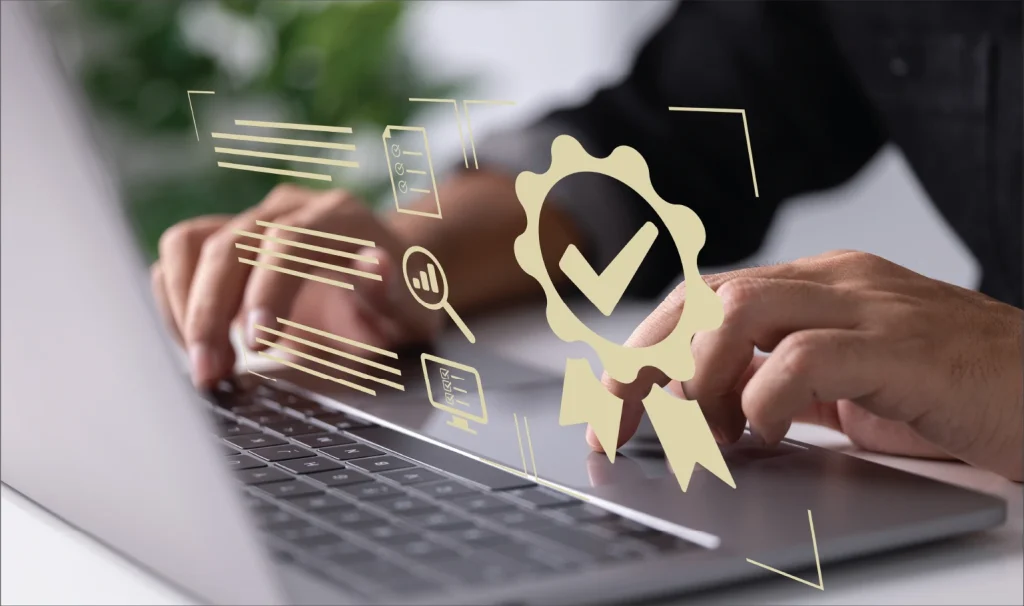
Certifications are the currency of credibility in the cybersecurity world. They validate your skills and make your profile stand out to employers.
Pinaki IT Hub has an excellent track record of preparing students for globally recognized certifications, including:
● Certified Ethical Hacker (CEH): for those aiming to be ethical hackers and penetration testers.
● CompTIA Security+ and CySA+: industry-standard credentials for entry-to-mid-level security roles.
● Certified Cloud Security Professional (CCSP): for specialists in cloud-based protection.
● AWS and Azure Security Certifications: for those targeting careers in cloud security.
● AI in Cybersecurity Specializations: to showcase your expertise in blending GenAI with threat defense.
Our programs integrate exam-oriented coaching with practical labs, so you not only pass the tests but also understand how to apply your skills in real work environments.
Result: Our students consistently outperform peers in certification exams and land jobs with top tech firms across the globe.
4.High Placement Success Rate with Career-Focused Support
At Pinaki IT Hub, your journey doesn’t end when you finish the course—we walk with you until you step into your new role.
Outstanding Placement Record
We have a 95%+ placement success rate, with our graduates being hired by:
● Leading multinational corporations (MNCs).
● Fast-growing cybersecurity startups.
● Specialized AI-driven security solution providers.
Tailored Career Support
Our dedicated career services team helps you:
● Build impactful resumes and LinkedIn profiles tailored for cybersecurity roles.
● Practice through mock interviews with real-world questions asked by top recruiters.
● Access direct connections with hiring partners and alumni networks for referrals.
Advantage: With such comprehensive support, you enter the job market with both the skills and the confidence to succeed.
Future-Ready Curriculum for Today’s Threat Landscape
Cyber threats evolve rapidly, and so does our curriculum. Pinaki IT Hub’s programs are constantly updated to match the needs of the current cybersecurity landscape.
Cutting-Edge Learning Modules
Our curriculum focuses on the skills and technologies that matter today:
● GenAI-Driven Defense Strategies: understanding how AI predicts and prevents threats.
● Cloud-Native Security: securing applications and data hosted in multi-cloud environments.
● Secure Coding Practices: writing software that is resistant to common vulnerabilities.
● Incident Automation & Response: using AI-driven platforms to react faster to breaches.
Beyond Technical Knowledge
We believe that today’s cybersecurity professionals need a mix of technical expertise, problem-solving skills, and critical thinking. Our approach includes:
● Collaborative projects to encourage teamwork.
● Real-life simulations that build decision-making skills.
● Case studies on high-profile cyber incidents to learn lessons from the field.
Outcome: You graduate industry-ready, capable of facing the challenges of modern cyber defense.
What Sets Pinaki IT Hub Apart
While many institutions teach cybersecurity, Pinaki IT Hub brings together all the essential elements—hands-on tools, seasoned mentors, recognized certifications, placement support, and future-proof training.
We bridge the gap between academic learning and practical industry demands, ensuring our students are not just employable but also positioned to lead in the rapidly changing field of AI-powered cybersecurity.
Closing Thoughts: Your Future Begins Here
Choosing the right place to start or grow your career is a defining decision. At Pinaki IT Hub, we combine deep expertise with real-world insights to create a learning experience that transforms students into professionals who matter.
In a world where cyber-attacks are becoming smarter, companies need defenders who are smarter still—armed with GenAI, strong ethics, and a commitment to safeguarding digital trust.
If you’re ready to build a career that’s future-proof, globally relevant, and deeply impactful, Pinaki IT Hub is where your journey begins.
Building a Safer Digital Future
In the age of Generative AI, cybersecurity is not just about defense—it’s about innovation, foresight, and automation. From protecting your personal data to securing global enterprise networks, the fusion of AI and cybersecurity is shaping the backbone of our digital future.
With the right skills and guidance, you can be part of this transformative journey.
👉 Start your career today with Pinaki IT Hub—where we build the next generation of AI-driven cybersecurity leaders.
🌐 www.pinakiithub.com



